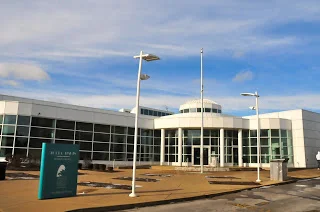If any of these owners actually live in St. Louis, I apologize, but my guess is they are County residents who are not being asked for public $ at the city/county level and not expected to own the stadium if the team decides to pull a Arizona Cardinals/Los Angeles Rams move.
Now remember, some of these same well-meaning folks were behind building a second NFL stadium for the Rams. No offense, but they don't understand what people who live in St. Louis need. It is not stadiums, it is $ for schools, neighborhood stabilization, potholes, and cameras, cops, investigators and prosecutors to combat the out of control crime we have to deal with. It's always easier to spend someone else's money.
The group includes St. Louis Cardinals President Bill DeWitt III, World Wide Technology CEO Jim Kavanaugh, prominent hotelier Bob O’Loughlin, UniGroup President Jim Powers, St. Louis Blues CEO Chris Zimmerman and former NFL task force co-chairman Dave Peacock.
Jim Woodcock, global sports co-lead and senior vice president at FleishmanHillard, said the group — which is dubbing itself MLS2STL — came together naturally as several of its members, including Woodcock, began asking about MLS ownership following the departure of the St. Louis Rams. (source)
But the pretty pictures and potential for the city were a bit tarnished by the need for massive adjacent and on-site surface parking lots that are not needed 348 days out of the year, and financial support of public tax money from St. Louis only. No St. Charles, St. Clair, Madison, Jefferson or St. Louis County support has been asked for to date, just good old money bags St. Louis. Yeah right. We are broke and need the money more than any city in the region. But we're supposed to bankroll this thing for 17 professional sports games a year (more if you make the playoffs). The Blues bring 41 games and the Cards bring 81.
Oh, and they want the city to own the stadium. Remember how this works Rams fans? It is not smart investment.
I want MLS soccer here, but we should not be the only city paying for it.
However, I expect in any negotiation the first offer is the one that most benefits the party making the offer. This is how most negotiations work. It is now up to the leaders in the city to pass the napkin back across the table with a better offer.
And hopefully the voters can decide if the public money from St. Louis should go to another sports stadium that we own.
Remember how this played out with the Rams? It is happening again.
As a citizen and voter in St. Louis, I am willing to pitch in some for this team. The terms have to be reasonable and the ratio of public funds should match the wealth of the region. If it does, this could be a great regional effort to bring a popular and growing sport to St. Louis.
The region can play together nicely and bring a team here. St. Louis would be a great location, we just need to not get completely screwed over financially.
It can work, but will it? Look no further than Great Rivers Greenway or the Zoo Museum District to see the amazing things we can do when we pool our resources.
It will be fun to watch it all play out in 2017.
Viva St. Louis.


















































































